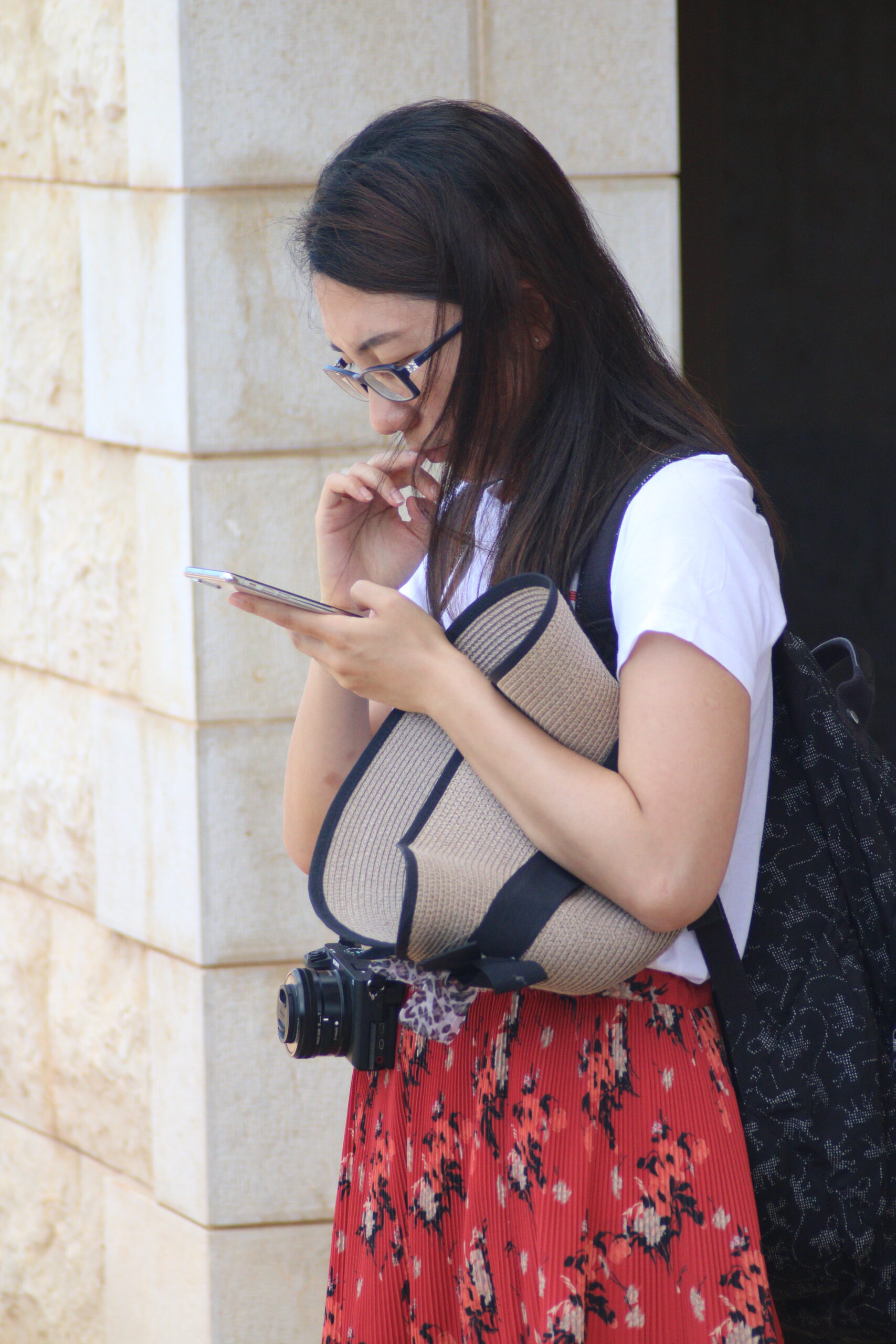In the image titled “Travel Photography: Smartphone or Camera? Maybe a Bit of Both,” we see a young woman deeply engrossed in her smartphone, possibly checking her recent photos or navigating through travel apps. She is standing beside a beige stone wall, indicative of a historical or scenic location. Her attire suggests a blend of comfort and style, with a white short-sleeved shirt and a vibrant red skirt adorned with floral patterns. She carries a black backpack with a subtle pattern, likely holding her travel essentials.
What stands out in the image is her hat, a broad-brimmed piece made of straw or a similar material, slung casually over her arm. This hat hints at her being prepared for a sunny excursion. Additionally, a compact digital camera hangs from her neck, suggesting her dual approach to capturing moments. This juxtaposition of using both a smartphone and a traditional camera highlights the modern traveler’s dilemma: the convenience of a smartphone’s immediate accessibility versus the superior quality and control of a dedicated camera.

Travel photography has evolved dramatically over the years. The advent of smartphones equipped with high-quality cameras has democratized photography, making it accessible to anyone with a phone in their pocket. Smartphones offer unparalleled convenience; they are lightweight, easy to use, and come with a plethora of apps for editing and sharing photos instantly. The woman in the image epitomizes this modern trend, her attention fixed on her smartphone as she possibly reviews or shares her latest captures.
However, despite the convenience of smartphones, dedicated cameras still hold a cherished place in the hearts of many travel enthusiasts. The digital camera hanging around the woman’s neck is a testament to the enduring appeal of traditional photography equipment. Cameras, especially DSLRs and mirrorless models, offer superior image quality, greater control over settings like aperture and shutter speed, and the ability to use different lenses to achieve various photographic effects. These features are crucial for capturing the intricate details and dynamic range of light and shadow that can define a memorable travel photo.
The choice between a smartphone and a camera ultimately depends on the traveler’s priorities. For those who value spontaneity and the ability to capture and share moments instantly, a smartphone is an ideal choice. It allows for quick snaps and easy access to social media platforms, making it perfect for documenting travel adventures in real-time. On the other hand, for travelers who prioritize image quality and creative control, a dedicated camera is indispensable. It enables them to capture high-resolution images that can be edited meticulously and printed in large formats without losing detail.
In the end, the woman in the image exemplifies a balanced approach, carrying both a smartphone and a camera to harness the best of both worlds. This strategy allows her to quickly capture and share fleeting moments with her smartphone while relying on her camera for more deliberate, high-quality shots. This dual approach ensures that no moment goes uncaptured and that each memory can be preserved in the best possible way.
Travel photography, therefore, doesn’t have to be an either-or choice between smartphones and cameras. By embracing both technologies, travelers can enhance their ability to document their journeys comprehensively and beautifully. Whether it’s the immediacy of a smartphone or the refined quality of a camera, each has its place in the modern traveler’s toolkit, complementing each other to create a rich tapestry of memories from their adventures.
Leave a Reply